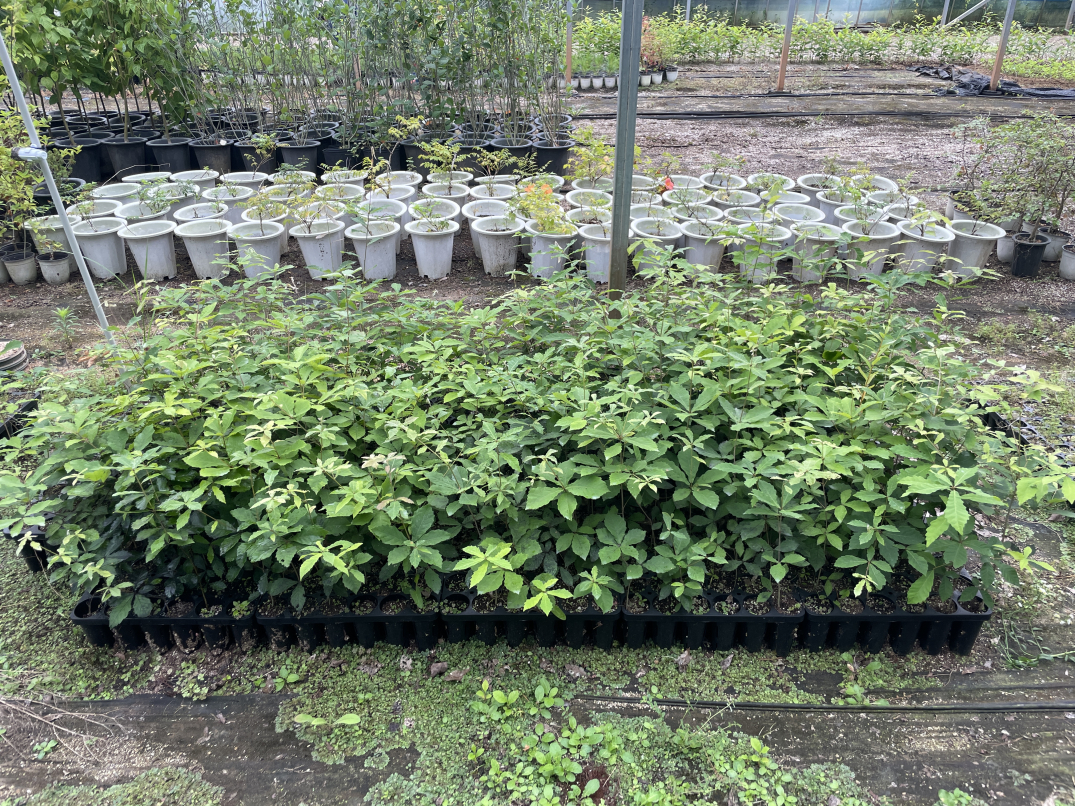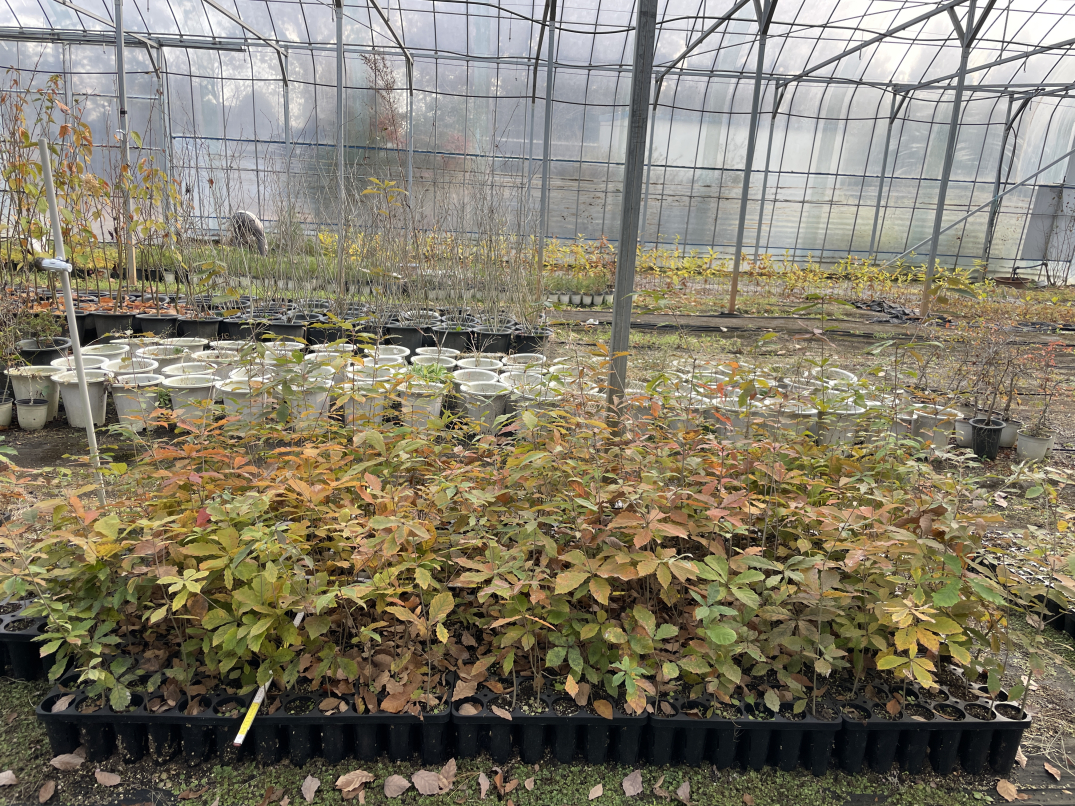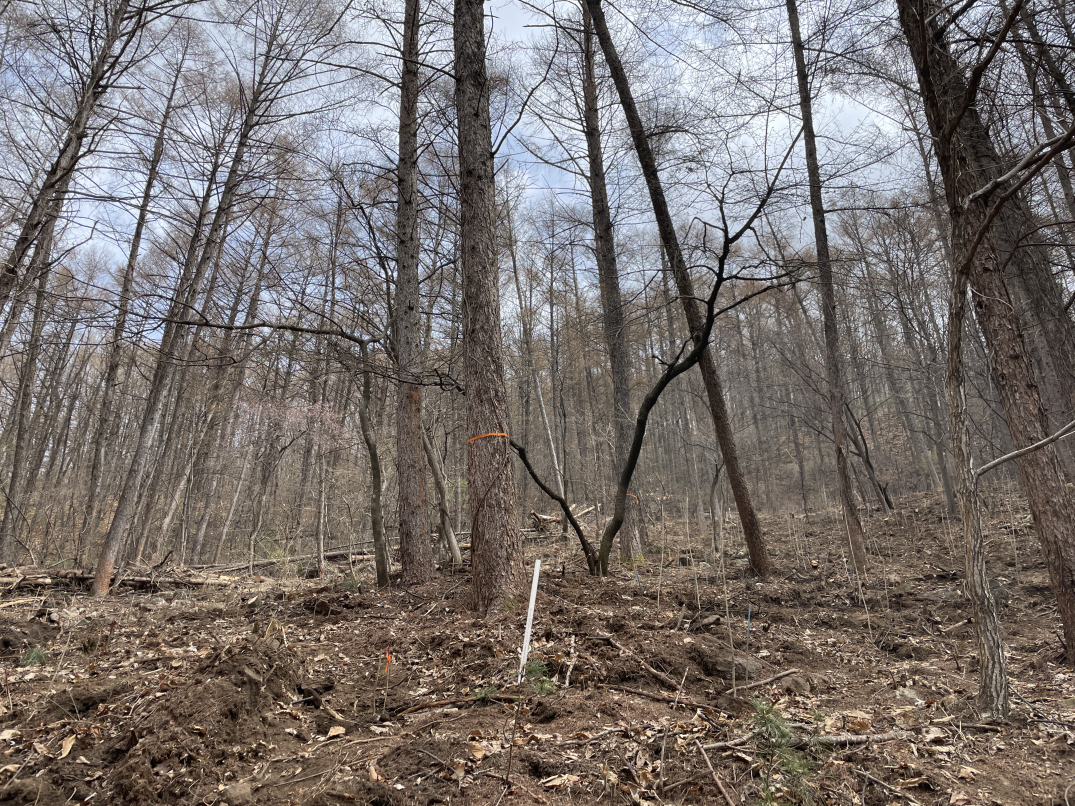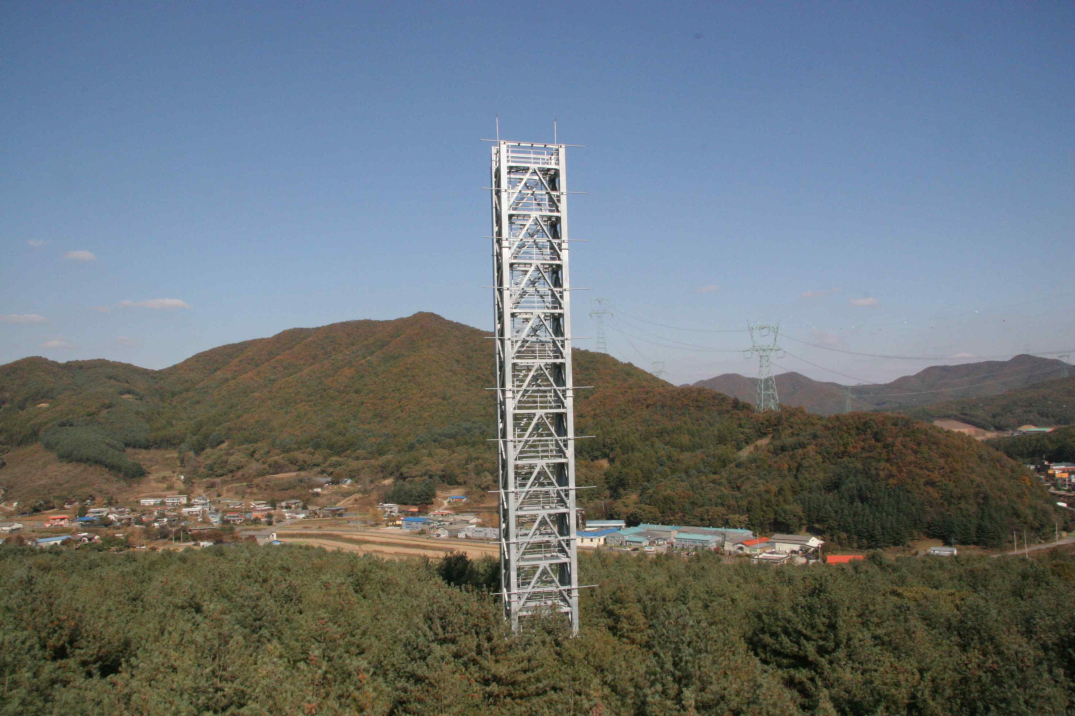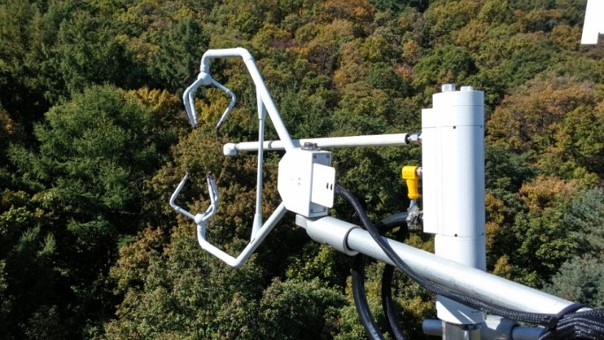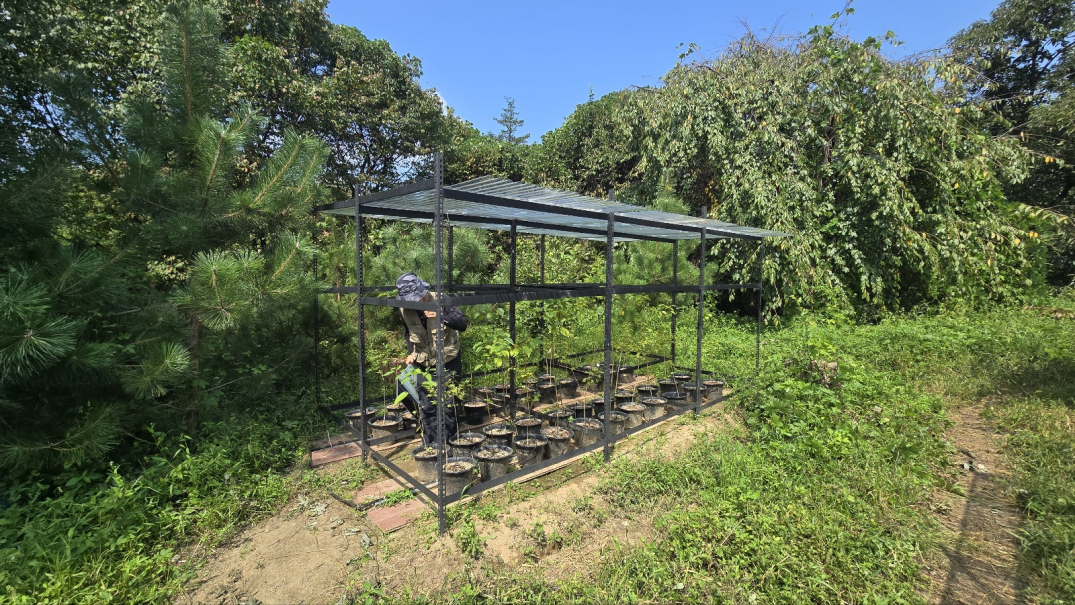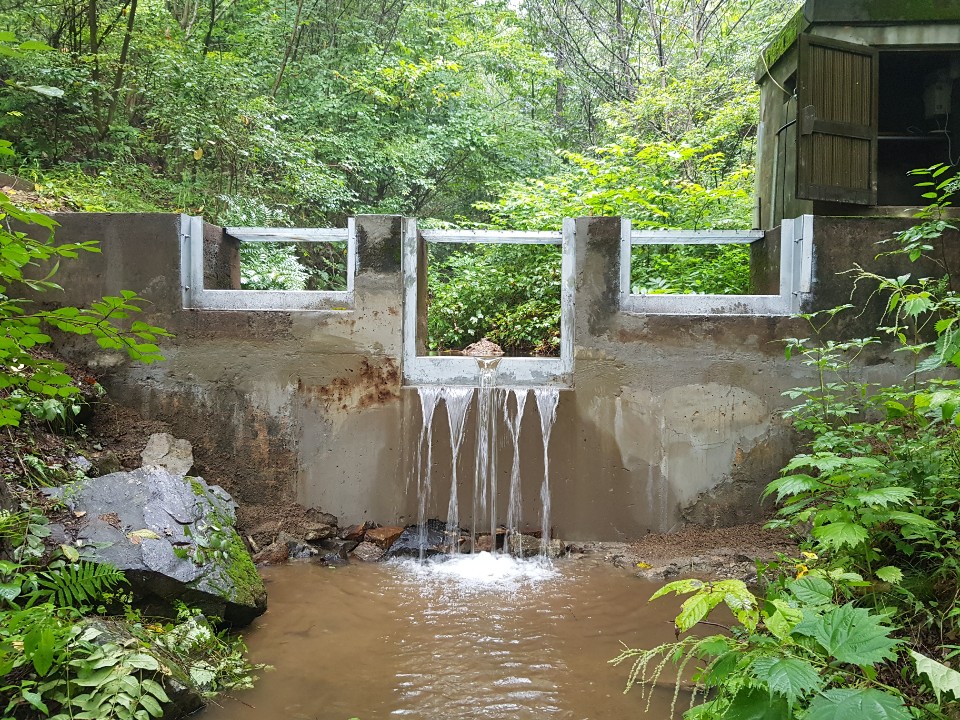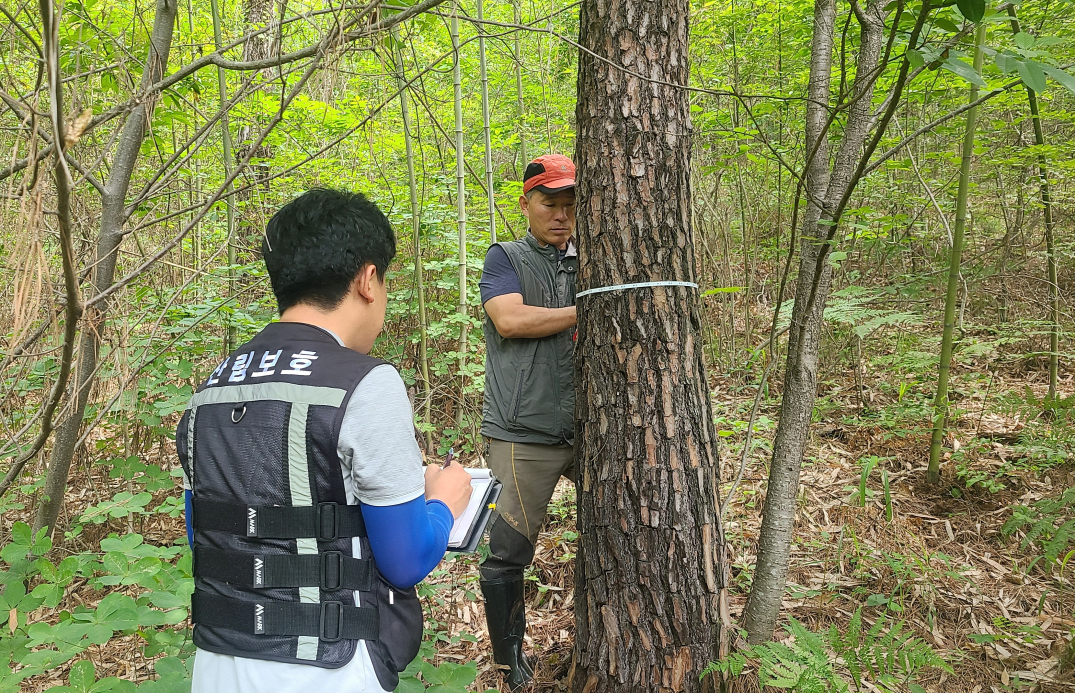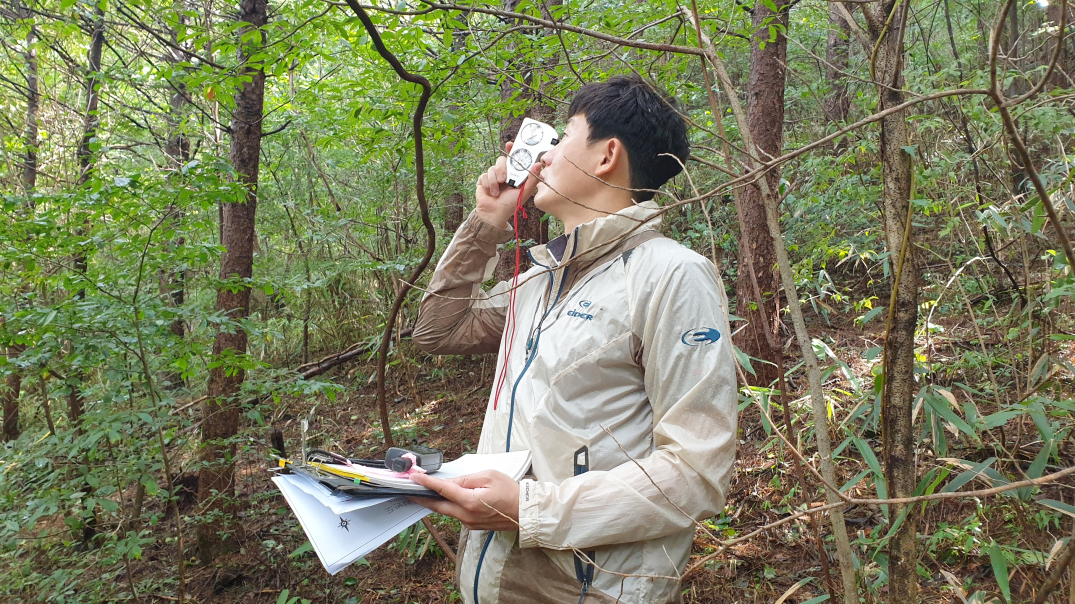1. Research on development of forest management guidelines by stand characteristics
- -Research period : 2022-2024
- -Experimental cultivation site : Taehwasan Academic Forest, Chilbosan Academic Forest
- -Manager : Professor Pil-seon Park, Department of Forest Science
This research aims to develop guidelines for forest management based on stand characteristics by producing seedlings of native broad-leaved tree species and studying suitable seedling production methods and planting techniques for Korea's stand and species characteristics through field transplantation. In 2022, container seedlings of oak species and Betula costata were produced by sowing seeds in the Chilbosan greenhouse. In 2023, ash (Fraxinus rhynchophylla) and Manchurian ash (Fraxinus mandshurica) seedlings produced in Chilbosan were planted in the Japanese larch plantation of the Taehwasan Academic Forest to study their growth patterns.
2. Monitoring of forest carbon and water balance using eddy covariance system
- -Research period : 2015-To be continued
- -Experimental cultivation site : Taehwasan Academic Forest
- -Manager : Professor Kim Hyeon-seok, Department of Forest Science
In the Taehwasan Academic Forest, a 41-meter flux tower has been installed in the Korean pine plantation, and a 27-meter flux tower in the natural oak forest, to comparatively study the responses of evergreen coniferous forests and deciduous broad-leaved forests to climate change. By measuring the amount of CO2 absorbed and released by the forest ecosystem, research is conducted on the impact of climate change on the carbon uptake and release of forest ecosystems. Additionally, by measuring the amount of water released into the atmosphere through evapotranspiration, the study also investigates how the forest's water retention capacity may change in response to future climate change. Ultimately, by proposing forest management strategies that can maintain and enhance the carbon absorption capacity and water retention capacity of forest ecosystems, the research aims to address climate change.
3. Methods for producing seedlings by species to improve drought resistance of afforestation species
- -Research period : 2021-2024
- -Experimental cultivation site : Taehwasan Academic Forest
- -Manager : Professor Kim Hyeon-seok, Department of Forest Science
Due to climate change, the frequency and intensity of droughts are increasing. To develop next-generation afforestation species with high drought resistance, this research aims to identify genes by examining the differences in the expression levels of drought-related genes between drought-tolerant and drought-sensitive species. It also seeks to investigate the impact of drought treatment on the health of trees after being transplanted to the forest, as well as the growth, physiological, biochemical, and molecular genetic characteristics of different species.
4. Observation project on the impact of forest water supply
- -Research period : 1991-To be continued
- -Experimental cultivation site : Taehwasan Academic Forest, Southern Academic Forest
- -Manager : Clinical Associate Professor, Department of Forest Science
The hydrological characteristics of forest watersheds are monitored by tracking changes in water level and soil moisture in the Baramgol and Bukmungol basins of the Nambu Academic Forest. Since the 1930s, when tree planting began on the mountains, water level observation facilities were installed at three locations in the Chusan Experimental Forest to investigate changes in mountain runoff due to forest restoration. Unfortunately, all facilities were destroyed during the Korean War. In 1999, Seoul National University, based on historical data, located the war-damaged facilities and restored them to their original state, making them one of the oldest operating water level observation facilities in Korea. The Nambu Academic Forest Hydrology Station analyzes the patterns and investigates the causes of water resource changes resulting from forest changes. This research seeks to answer questions such as: how do the quantity and quality of streamflow change when forests undergo succession and disturbance under the same precipitation conditions? And what changes are caused by variations in precipitation due to climate change?
5. Permanent sample plot vegetation survey
- -Research period : 1998 - To be continued
- -Experimental cultivation site : Southern Academic Forest
- -Manager : Kim Gwang-hyun, Southern Academic Forest
The permanent sample plot monitoring in the Nambu Academic Forest is a fundamental and crucial aspect of forest ecology research. By monitoring the vegetation status of the natural forests within the Nambu Academic Forest, the current growth status, community structure, and vegetation changes of the forest are assessed. Furthermore, during vegetation surveys, site conditions, topography, and forest stand boundaries are identified and understood, and the collected data are utilized as foundational information for establishing forest management plans.

